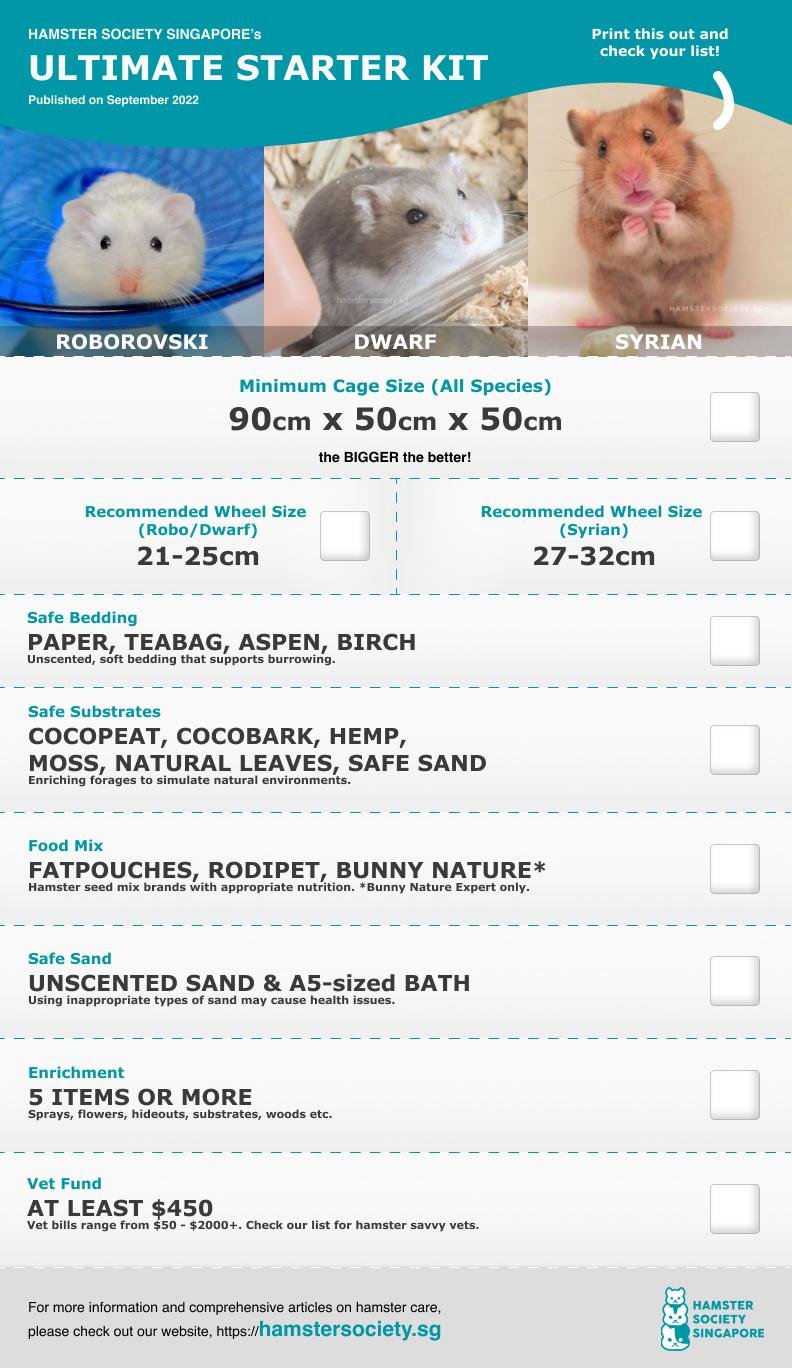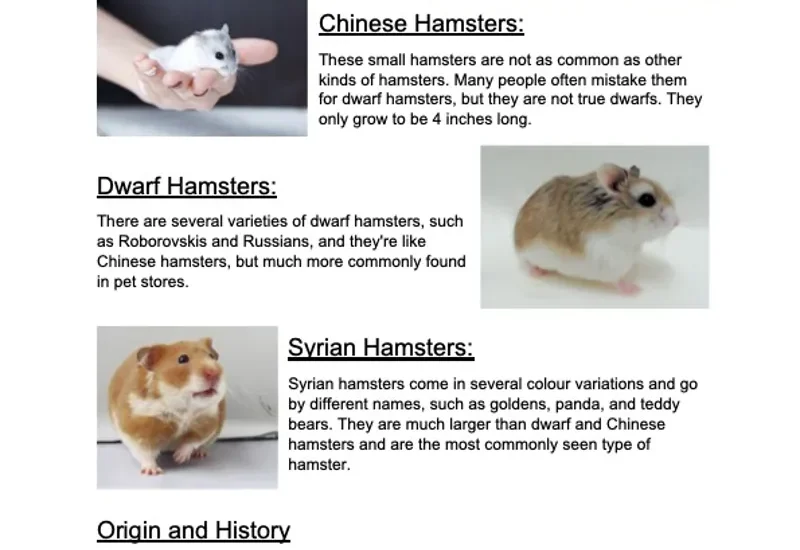The Best Hamster for Care and Maintenance
Choosing the Right Type of Hamster
When considering a pet hamster, it’s essential to choose the right breed that suits your lifestyle and preferences. Different types of hamsters have varying care requirements, temperaments, and life spans. Popular options include the Syrian hamster, which is larger and typically solitary, making it easier to care for as it requires its own space and does not need a companion. Conversely, dwarf hamsters, such as Campbell’s and Roborovski, are smaller, more social, and can often thrive in pairs or groups. Each breed presents unique features; thus, understanding their specific needs is crucial.
Syrian Hamster Care
The Syrian hamster is well-known for being friendly and easy to handle, making it a popular choice for first-time owners. **Care for a Syrian hamster** typically involves a spacious cage (at least 24” long), bedding, and a variety of enrichment activities, such as tunnels and wheels. They require high-quality hamster pellets and fresh fruits and vegetables in moderation to ensure they have a balanced diet. Additionally, it’s essential to provide a small hiding spot where they feel safe, especially during the day when they typically sleep.

Dwarf Hamster Considerations
Dwarf hamsters, such as the Campbell’s and Roborovski, are ideal for those who prefer smaller and more active pets. **Dwarf hamsters** thrive in social environments and can often be kept in pairs or small groups. However, it’s crucial to monitor for aggressive behavior. The care for these hamsters involves ensuring they have ample wheel space and interactive toys, given their higher energy levels. The cage setup should be at least 24” long, with a focus on horizontal space rather than vertical, allowing them to run and play to their heart’s content.
Essential Care Aids for Hamsters
Proper care of hamsters not only involves the right diet and housing but also includes enrichment and healthcare needs. By ensuring that your hamster has access to the right supplies, you can create an ideal environment for their well-being. The right items include bedding, food, chew toys, and cleaning materials, which all play a role in their health and happiness.
Bedding and Cleanliness
A vital aspect of hamster care is maintaining a clean environment. Choose **bedding** made from aspen, paper, or hemp, avoiding cedar and pine, as their oils can be harmful. Spot clean the cage daily, and do a full clean weekly, replacing bedding and disposing of uneaten food. A clean home minimizes odors and prevents health issues in hamsters. Regular hygiene not only keeps the smell down but also allows for easier observation of your pet’s health, making it easier to spot issues before they become serious.
Diet and Nutrition
Feeding your hamster a balanced diet is critical. Hamsters thrive on a diet consisting of high-quality pellets, fresh veggies, and occasional treats like sunflower seeds. **Hamster nutrition** should focus on ensuring they get enough protein, carbohydrates, and fiber. Fresh water must always be available, ideally from a water bottle to prevent spillage. Watch for overfeeding, as hamsters can easily become overweight, leading to health problems. Understanding the dietary needs of your specific hamster type is key to ensuring they stay happy and healthy.
The Importance of Socialization and Interaction
Hamsters are typically solitary creatures, yet socialization is crucial for their happiness and health. Engaging your hamster through handling, play, and exploration can significantly enhance their well-being. Positive interaction helps build trust and makes caring for your pet a more rewarding experience.
Frequent Interaction Techniques
To strengthen the bond between you and your hamster, make it a habit to interact with them daily. **Gentle handling**, starting with short sessions and gradually increasing the duration, can help your hamster become more comfortable. Create a comfortable space where your hamster can safely explore outside of their cage with supervision. This interaction stimulates their environment and encourages mental engagement, enhancing their overall health.
Creating an Enriching Environment
An enriching environment enhances both physical activity and mental stimulation. Simple **hamster toys** such as tunnels, climbing structures, and puzzle feed toys can greatly improve their quality of life. Rotating toys frequently keeps their habitat interesting, reducing stress levels. Additionally, engaging your hamster in maze activities or allowing them to forage for food can replicate natural behaviors, leading to a happier, healthier hamster.
Maintaining Health and Wellness
Just like any other pet, hamsters require regular health monitoring. Recognizing early signs of illness, maintaining proper veterinary check-ups, and ensuring that they have a safe living environment are key elements of hamster care.
Health Issues to Watch For
Common health issues in hamsters include wet tail, respiratory problems, and dental disease. Being vigilant about your hamster’s behavior and appearance can help you catch these issues early. Signs like lethargy, changes in appetite, or abnormal droppings warrant a visit to your vet for diagnosis and treatment options. **Hamster health monitoring** also involves regular checks for signs of overgrown teeth or any skin irritations that may arise.
Veterinary Care and Preventative Measures
Regular veterinary visits can preemptively catch health issues. Discuss preventative care tips with your veterinarian tailored to your hamster breed and lifestyle. Vaccinations may not be as common for hamsters but keeping their environment clean and providing a healthy diet plays a crucial role in maintaining their health. Signs of stress or poor health should never be ignored, and seeking professional help can often lead to better outcomes.
Key Takeaways
- Choose the right breed for your lifestyle, focusing on care needs.
- Maintain a clean living environment with appropriate bedding and toys.
- Ensure a balanced diet with varieties of food for nutritional health.
- Engage frequently with your hamster to strengthen bonding and reduce stress.
- Monitor health closely and maintain regular veterinary check-ups.
FAQ
1. What type of habitat is best for my hamster?
A suitable habitat for hamsters includes a spacious cage with ample bedding, hiding spots, a running wheel, and enrichment toys. Aim for a cage with a minimum size of 24” long for Syrian hamsters, ensuring proper ventilation and comfort. Having a good mix of horizontal space allows them to explore freely.
2. How often should I clean my hamster’s cage?
It’s recommended to spot clean your hamster’s cage daily to remove waste and uneaten food, and conduct a full clean once a week to replace bedding completely. This routine maintains cleanliness and minimizes odors while ensuring a healthier habitat for your pet.
3. Can hamsters be kept in pairs?
Some dwarf hamsters can be kept in pairs; however, not all species will tolerate a companion. Syrian hamsters should be housed alone due to territorial behaviors. Always monitor for aggression if you choose to house dwarf hamsters together.
4. What is the average lifespan of a hamster?
On average, hamsters live between 2 to 3 years, although some can reach up to 4 years with proper care and a good diet. The lifespan varies depending on the species, with Syrian hamsters generally living longer than dwarf varieties.
5. What are the signs of a healthy hamster?
Healthy hamsters are active, have bright eyes and clean fur, and exhibit normal eating and drinking habits. Regularly monitoring their behavior and checking for abnormal signs such as weight loss, lethargy, or discharge will help ensure ongoing health.
